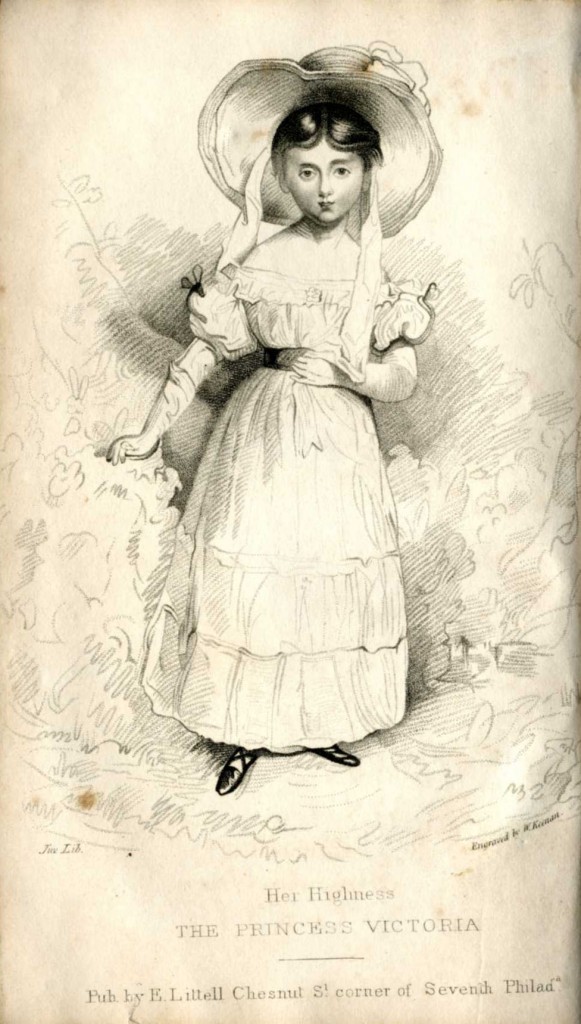 With all eyes in the media directed towards the new addition to the royal family, we’ve taken a look back to seek out evidence in the historical record of this subject’s proportional popularity. Unsurprisingly, American buzz on the most recent princes and princesses is anything but new.
With all eyes in the media directed towards the new addition to the royal family, we’ve taken a look back to seek out evidence in the historical record of this subject’s proportional popularity. Unsurprisingly, American buzz on the most recent princes and princesses is anything but new.
Indeed, everything about Queen Victoria’s life was reported in the nineteenth-century press – most notably her wedding and coronation. But coverage didn’t stop there. The deaths of her mother and husband were the lead stories in many American-based publications and when her children (and grandchildren) were born, their announcements took on comparable levels of interest with today. Here we have highlighted a few examples culled from AAS collection materials to showcase this fascination with royal newborns and infants hailing from the Hanoverians which we hope will contextualize our love affair with the newest branch on the tree of the House of Windsor.
Though the subject was of importance to British printers, artists, and publishers, as witnessed in an 1841 gift book from London that included “A Royal Christening” engraved by Samuel Bull, the British were not alone in creating images of a reigning baby. In 1830 Eliakim Littell of Philadelphia, Pennsylvania published Lives of Remarkable Youth with a dedication to “Her Highness the Princess Victoria.” The juvenile book featured a frontispiece engraving of the young princess (notably alone) by William Keenan (see above). A generation later we then see “Her Majesty Queen Victoria and the members of the Royal family” by J.M Ridley, an 1877 wood engraving appearing in Frank Leslie’s Illustrated Newspaper with a matronly Queen Victoria in the center literally surrounded by children of varying ages (see below). The years in between the two images witnessed coverage in both newspapers and periodicals which announced everything baby-related from their palace-births to the continued pride of Victoria’s husband, Prince Consort Albert.
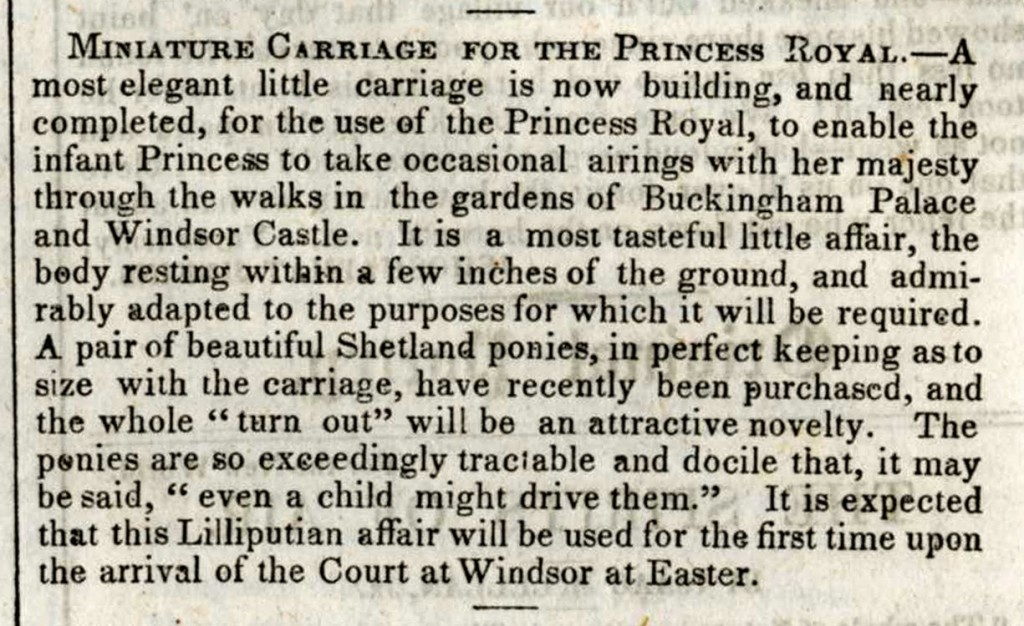 So how do we get from the young solitary princess in 1830 to the queen we see surrounded by dozens of her progeny in 1877? It begins with Victoria’s first child, born in 1840 and also named Victoria, but known to the family as Vicky. An article appearing in the New York-based publication the New World for March 27, 1841 describes the service, banquet, and concert on the occasion of the Christening of the Princess Royal. According to the article, the child was baptized “without even a whimper.” The Foreign News section in the same issue finds Her Majesty presumably pregnant with the future king (ahem), quote: “again in an ‘interesting situation.’ Exciting the hopes and sympathies of her loyal subjects.” (Her second child was indeed the future king. This was Albert Edward, later Edward VII, born on November 9, 1841.) An 1841 article in the New World describes the miniature carriage for the Princess Royal, explaining with careful attention to detail the transport which is meant “to enable the infant Princess to take occasional airings with her majesty.”
So how do we get from the young solitary princess in 1830 to the queen we see surrounded by dozens of her progeny in 1877? It begins with Victoria’s first child, born in 1840 and also named Victoria, but known to the family as Vicky. An article appearing in the New York-based publication the New World for March 27, 1841 describes the service, banquet, and concert on the occasion of the Christening of the Princess Royal. According to the article, the child was baptized “without even a whimper.” The Foreign News section in the same issue finds Her Majesty presumably pregnant with the future king (ahem), quote: “again in an ‘interesting situation.’ Exciting the hopes and sympathies of her loyal subjects.” (Her second child was indeed the future king. This was Albert Edward, later Edward VII, born on November 9, 1841.) An 1841 article in the New World describes the miniature carriage for the Princess Royal, explaining with careful attention to detail the transport which is meant “to enable the infant Princess to take occasional airings with her majesty.”
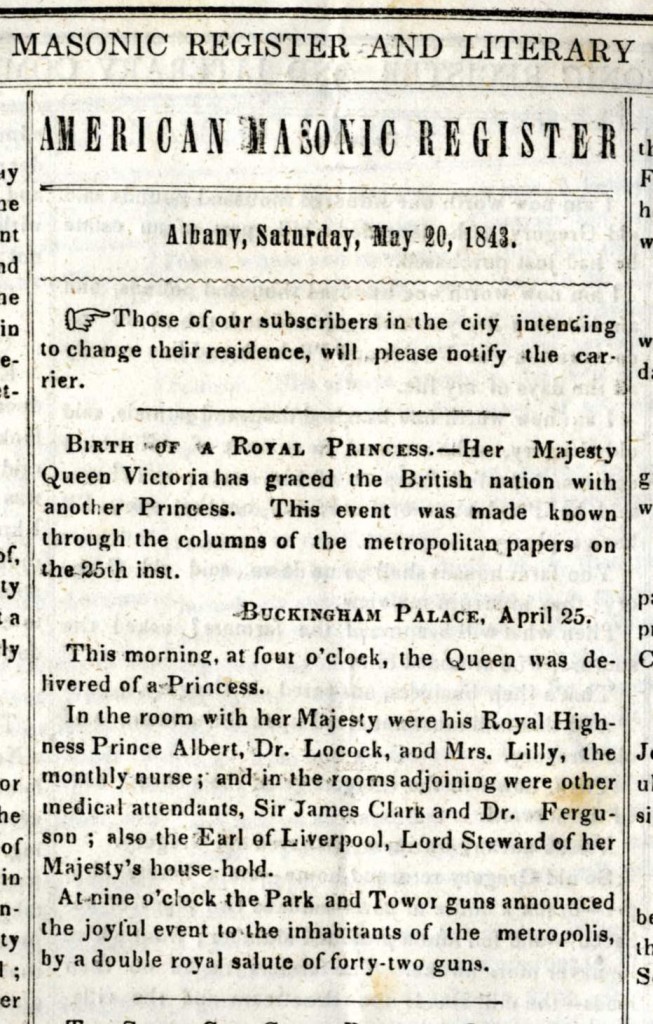 In May 1843, coverage continued in publications as audience-specific as the American Masonic Register, this time with mention of the newest princess Alice, and such precise details as to whom was in the room with the queen and at what time she was born (4:00 AM, her husband Prince Albert, Dr. Locock, and a nurse named Mrs. Lilly for those who are curious).
In May 1843, coverage continued in publications as audience-specific as the American Masonic Register, this time with mention of the newest princess Alice, and such precise details as to whom was in the room with the queen and at what time she was born (4:00 AM, her husband Prince Albert, Dr. Locock, and a nurse named Mrs. Lilly for those who are curious).
As if the American public couldn’t get enough information about the increasing royal family, publications such as Godey’s Lady’s Book, always on the pulse of subjects of interest to women, presented the engraving “Queen Victoria’s Treasures” in February 1844, invoking the idea of royal jewels (see below). In the accompanying article, the Queen is observed to “be an example for the women of her own great kingdom, [and] is, therefore, highly important to the world; and we rejoice that she so beautifully exemplifies the best virtues of her sex, in her character as wife and mother.” In order to ensure that there were no questions about viewers’ gaze being directed towards her maternal characteristics the article concludes, “All the regalia in the Tower of London would not so adorn and beautify Victoria in our eyes, as the jewels of her maternal love, which she displays in this picture.”
As if to further prove that Godey’s will rarely disappoint the fashion-conscious, in September 1848 Sarah Josepha Hale, editor of Godey’s, provides a gorgeous description of dresses and music for the newest regal christening for Princess Louise (Queen Victoria’s sixth child and fourth daughter):
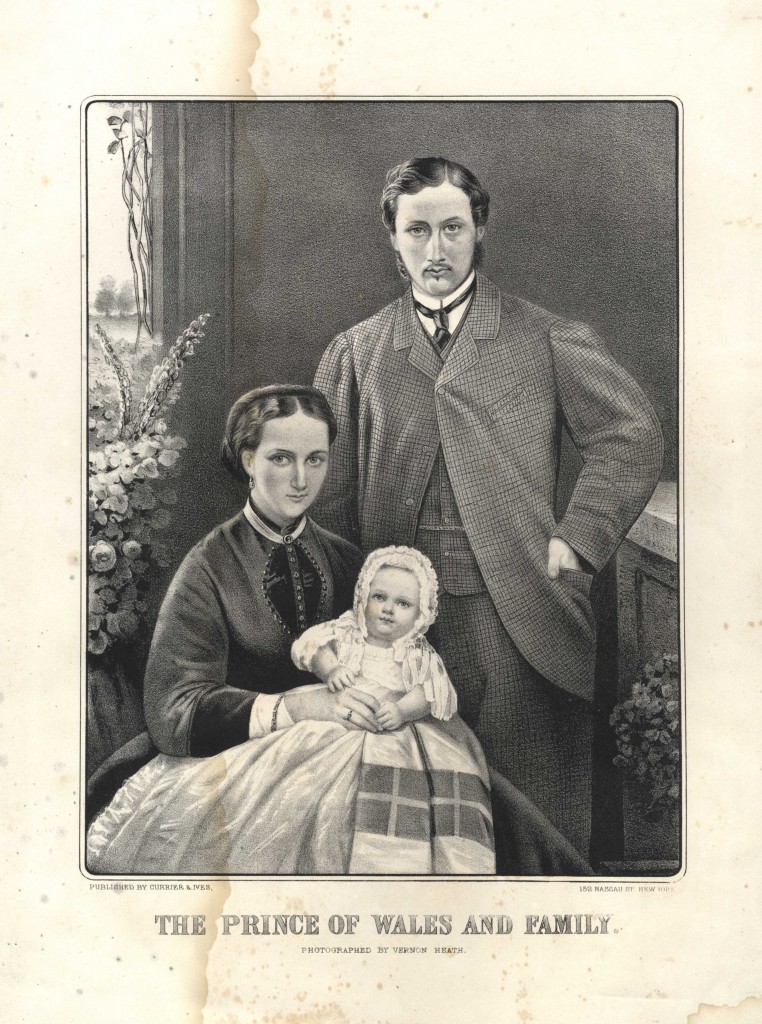 Even the years during the American Civil War couldn’t deter the interest in royal infants. A black and white Currier & Ives lithograph from 1865 shows a family portrait of Victoria’s eldest son Albert Edward, the Prince of Wales and later Edward VII, with his wife Princess Alexandra and their young infant, Prince Albert Victor.
Even the years during the American Civil War couldn’t deter the interest in royal infants. A black and white Currier & Ives lithograph from 1865 shows a family portrait of Victoria’s eldest son Albert Edward, the Prince of Wales and later Edward VII, with his wife Princess Alexandra and their young infant, Prince Albert Victor.
And while some images were created to be framed and displayed (such as the above-mentioned lithograph seen to the left), others were meant for far more portable (pocket-sized) means, such as this September 1870 carte-de-visite of the Royal Family including an annotation on the reverse: “Queen, Prince of Wales, Louise, Beatrice, Prince Leopold, the Children of the Prince of Wales.”
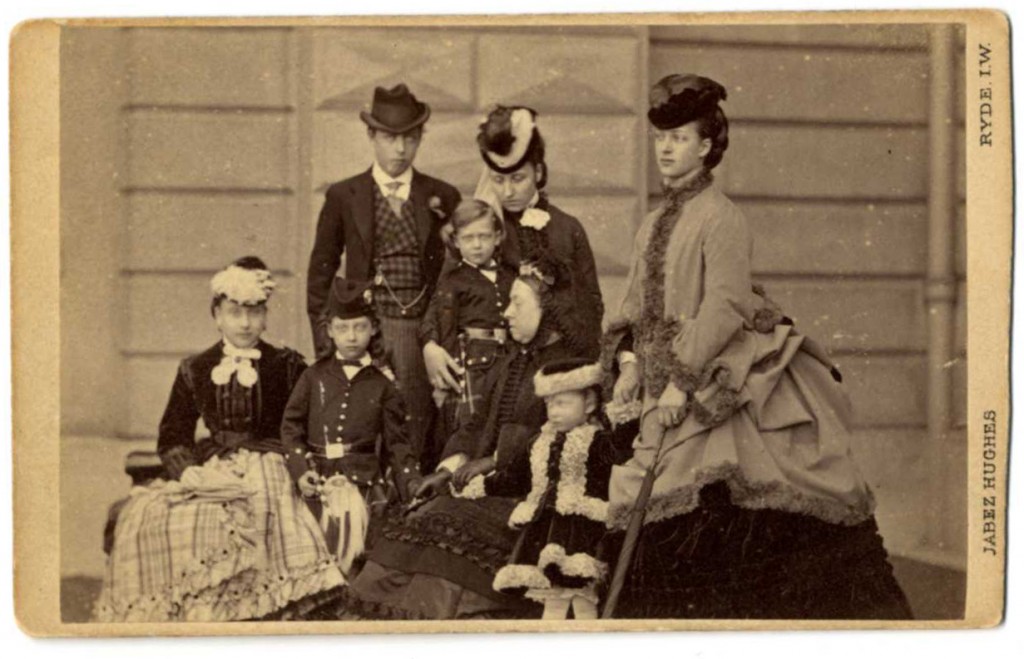 Indeed, the guilty pleasure of royal baby voyeurism is one shared across centuries. Though resources were spent throughout much of the nineteenth century on working towards an artistic, literary, and cultural independence to match our relatively recent political one, we were quick to co-opt the pleasures of the monarch’s royal babies.
Indeed, the guilty pleasure of royal baby voyeurism is one shared across centuries. Though resources were spent throughout much of the nineteenth century on working towards an artistic, literary, and cultural independence to match our relatively recent political one, we were quick to co-opt the pleasures of the monarch’s royal babies.
If you are in the AAS reading room, stop by to view some of these items on display in the exhibition case.

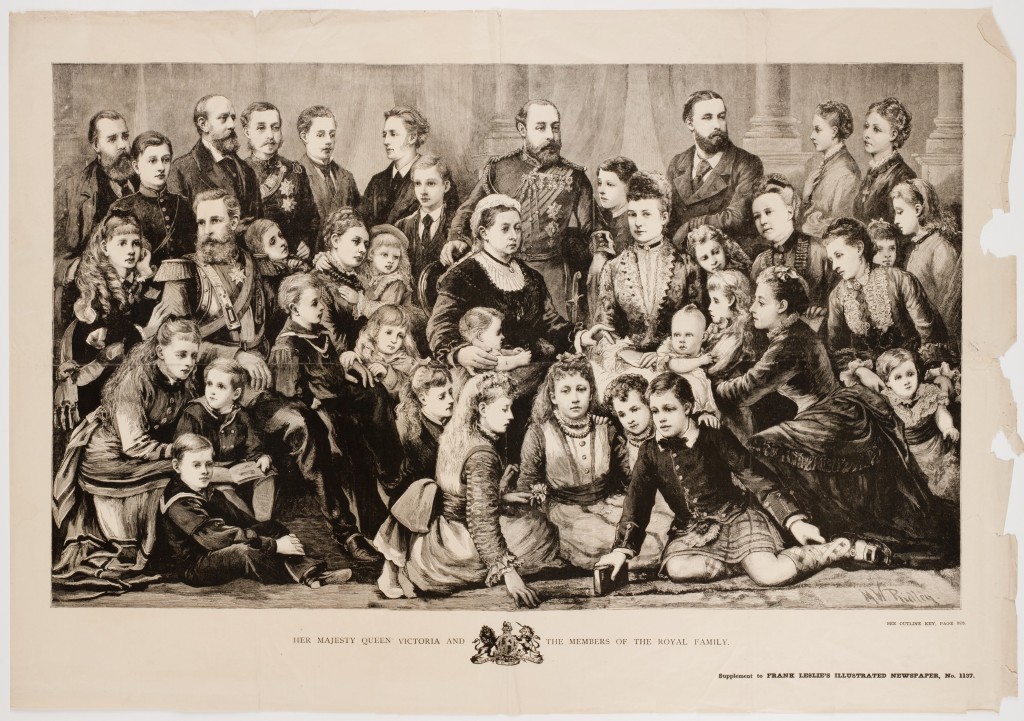


Now we know who produced this week’s delightful and timely exhibition in the reading room! Thanks, Jackie, for turning to the archive so creatively and for sharing your findings in such detail.